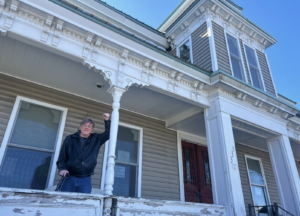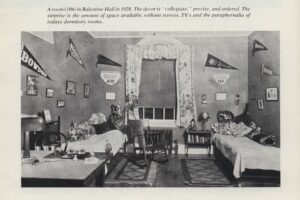Half an hour outside of the small dusty town of Damak in eastern Nepal is a tiny bamboo village. This town is almost 30 years old, yet legally does not exist on Nepali maps. Its name has a number at the end, it has no mayor, its local government is not paid and most of its operations are run by the United Nations. This small hamlet, known as Beldangi II, is the last remaining refugee camp populated by the Lhotshampa people of southern Bhutan. They were forcefully exiled between 1989 and 1991, and although a vast majority have resettled in countries across the world, thousands are still living in Beldangi II. These few thousand Lhotshampa faced unimaginable hardships at the hands of the government of a country in which a majority can trace their bloodlines back centuries, and though many have been given new homes, as many as 6,500 have been left behind in a bamboo town forgotten by the 21st century.
Beginning as simple laborers as early as the 17th century, the Lhotshampa inhabited the tropical lowlands of Bhutan, bringing over a unique culture from their homeland of Nepal. Initially, the Bhutanese monarchy did not concern itself with this mass immigration, as Bhutan had too few unskilled laborers to fulfill the aspiration of the head of state, the Druk Gyalpo, and this inflow of potential working hands was believed to only be beneficial to the state. In fact, beginning in the 20th century, the Bhutanese monarchy even encouraged large families to settle in the southern lowlands, since the larger the overlooked illegal population was, the more tax money the government could collect, while at the same time denying basic care and rights to the Lhotshampan immigrants. As the Lhotshampa flowed in from Nepal, their population in the south ballooned, eclipsing the native Bhutanese population, which came to be a concern to the Bhutanese in the early 20th century.
While under British rule, the Druk Gyalpo expressed this concern to the local British office, which confirmed large numbers of Nepali immigrants in the southern lowlands. Over time, concerns grew to finally explode in the 1990s. Nepali culture was eradicated entirely. Dress, food, language and holidays related to Nepali culture or Hinduism were made illegal, and anyone caught practicing any kind of Lhotshampan tradition was imprisoned. This oppressive program began under the dystopian slogan “One Nation, One People,” and was a result of a fear of a similar coup to that in Sikkim by a Nepali majority that led to the ousting of the state monarchy and subsequent absorption of the state into India.
This interethnic conflict soon grew violent in the 1990s, with government convoys being bombed and gunfights between Lhotshampan resistance groups and government security forces, as well as civilians on both sides being abused and brutalized. By 1996, over 100,000 Lhotshampan refugees had fled Bhutan for Nepal due to an oppressive government and great threat of violence and settled in one of six camps. After a long period of stagnation and chaos, the Office of the United Nations High Commissioner of Refugees (UNHCR), finally began to verify refugees in the camps in 2001, and in 2007 announced plans for large-scale third-party repatriation programs. Though over 70,000 refugees were, and continue to be, repatriated, the program has begun to stagnate. Repatriation rates have dropped since the late 2000s, and fewer and fewer leave the camp each month for Australia, the last country to remain open for repatriation. Since the beginning of the camps, the refugees have essentially been left to wait around until they disappear. Over the years, the population of the camps began to shrink, with more and more disappearing from the map, until only Beldangi II remained. Now a simple hamlet reminiscent of traditional Nepali farming towns, Beldangi II is barely more than a densely populated slum, its eye-level skyline dominated by woven bamboo walls and fluttering prayer flags. It is there, amongst a people who have been left with no choice but to essentially abandon hope, that I found myself in November of 2018.
Purna Gurung sits behind a worn-down headmaster’s desk in a dark unlit office, a steaming tin cup of tea by his right hand. His office here at the elementary school in Beldangi is one room in the school complex, a horseshoe-shaped building made almost entirely of locally woven bamboo stalks. Mr. Gurung is a stocky man whose strength is evident even in the twilight of his office. He is the headmaster for a school of almost 900 students in the unknown quasi-town of Beldangi II in the Jhapa district of eastern Nepal. None of the children here are legal Nepali residents, nor do they hold passports to any other nations. In 1989, the forceful eviction of their parents from their homeland for centuries left them without a home for what is now almost three decades. The children here and most of their parents have never seen Bhutan. They grew up lost in a ramshackle refugee camp, surrounded by a landscape that bears no similarity to their homesteads on the sides of the mountainous countryside of Bhutan. Since the original deportation, the number of Lhotshampan refugee camps has shrunk from six to just the Beldangi camp outside of the small town of Damak.
Mr. Gurung yanks me back into the real world with a deep, loud, belly laugh. For a school headmaster, he is extremely jovial, and it’s almost hard to get him to focus on my questions. He asks his secretary for more and more tea, he asks me how I would pronounce his name (and laughs at me when I do), and then laughs to see my name written out on paper. When he attempts to say my overly-German last name I chuckle as he does, and he shoots me a cautioning look.
Outside, students are gathering for their morning announcements. Hundreds of white-sneaker-clad feet trample the thin grass of the school’s main courtyard, all excited to get a start on the day. The loud whine and snap of a loudspeaker suddenly interrupt my interview with Mr. Gurung, and he shoots to his feet. With his hand over his heart, he whispers along to a song that is very obviously not Nepali, and I stand with him out of respect. In the end, the schoolchildren fall back into their chatter, and Mr. Gurung and I take our seats.
“That is the Bhutanese national anthem,” he tells me, which explains the difference in language. “We do not teach the children that language anymore because there are no people who speak Bhutanese left in the camp.” A sobering message spoken in English that he speaks better than the language of his home country.
The schools here are among the best the United Nations has to offer. Although rotating teachers used to be an issue (one class saw 13 teachers come and go in one year), slowing resettlement rates have largely resolved this. In October of 2018, only eight students were resettled out of Beldangi. These children left for a new permanent life across oceans before ever having seen the nation that their parents still call home. Now, decades after the Lhotshampa were forced from their own country, often at gunpoint, the only country still available for resettlement is Australia, oceans away and worlds apart.
Over the last couple of decades, the United States took upwards of 60,000 Lhotshampan refugees, so many that Ohio is known amongst this refugee community as “Beldangi IV”. These refugees have been notable for their seamless reintegration and the opportunities they have taken to give back to their local, state and national communities. The Bhutanese Community of New Hampshire, for example, has extended beyond only Bhutanese refugees, and now provides resettlement assistance to African and Middle Eastern immigrants. No matter where they found a new home, the Lhotshampa have shown nothing but gratitude, repaying the communities that welcomed them with an endless outpouring of support and assistance to their new neighbors.
Many of the forgotten Lhotshampa in the last Beldangi camp have been conflicted over possible third-party country resettlement. The majority of those in the camp are young and were born amongst these bamboo and concrete shacks. They have never known anything but the confines of this United Nations camp, their own local community, and occasionally (but illegally) the market in nearby Damak. They are not particularly attached to Nepal, they are certainly not attached to Bhutan, and they see no issue with beginning a new and better life elsewhere. On the other hand, the older inhabitants of the camp are still, in their minds, rightful citizens of Bhutan. Most of them refuse to go anywhere but back home to Bhutan, and this causes issues for the United Nations High Council of Refugees, the UN committee that supervises the camp, forcing the committee to change their long-term plans to arrive at a more permanent solution.
Many of the refugee-run programs here have altered course to suit a more permanent style of life. The Reclamation Gardening Program, which once provided poorer families of the camp with locally grown vegetables, has now shifted towards producing seedlings so that the same families can begin planting crops of their own. These are people for whom survival is living. There is no difference to them. Everything they do, every task of their daily life, is not geared towards making themselves and their families more comfortable, but rather towards making sure that next week won’t be any harder than this one. But now, over thirty years after the Bhutanese military forced its own citizens back over the border at gunpoint, we, as a global community, have forgotten the hardships that these people faced. They are now struggling for food and money. Resettlement rates are dropping. The newer generation sees no reason for hope. The older generation, those who grew up in their Bhutanese homes, now refuse to go anywhere but back east to the mountains. They are literally dying to go home.
The lesson that the forgotten villagers of Beldangi provide is simple: don’t forget about us. Pay attention next time. Look out. Tyrannical, xenophobic governments intent on national purity are never to be overlooked. The United States would never be allowed to evict its entire Asian population centuries after they provided the labor to stitch the nation together with railroads; the United Kingdom would never expel their Indian population after the service they provided in two world wars and countless conflicts before and after. Why should a nation, no matter how unknown, be permitted to brutalize, oppress, and forcefully remove an entire population based solely on their language, dress, and culture? How could Bhutan be allowed to murder civilians, oppress an entire culture, and deny countless generations of a better future? Even worse, how could we forget? The recent Rohingya crisis in Myanmar began in a very similar manner to the Lhotshampa crisis in Bhutan: oppression of an ethical group, violence towards innocents, and the dehumanization of those who refuse to abandon the very core of their being in order to fit an oppressive government’s supposed cultural code. As it always seems to happen, we allowed the memory of the terrible acts forced onto the Lhotshampa to slip from our mind, and as the saying goes, those who do not learn from history are doomed to repeat it. We did not learn from the atrocious acts of 1989 and instead allowed innocents to suffer for it 30 years later.
Dying to go home: The past and future of the Lhotshampa of Bhutan
More from CultureMore posts in Culture »
More from FeaturesMore posts in Features »








